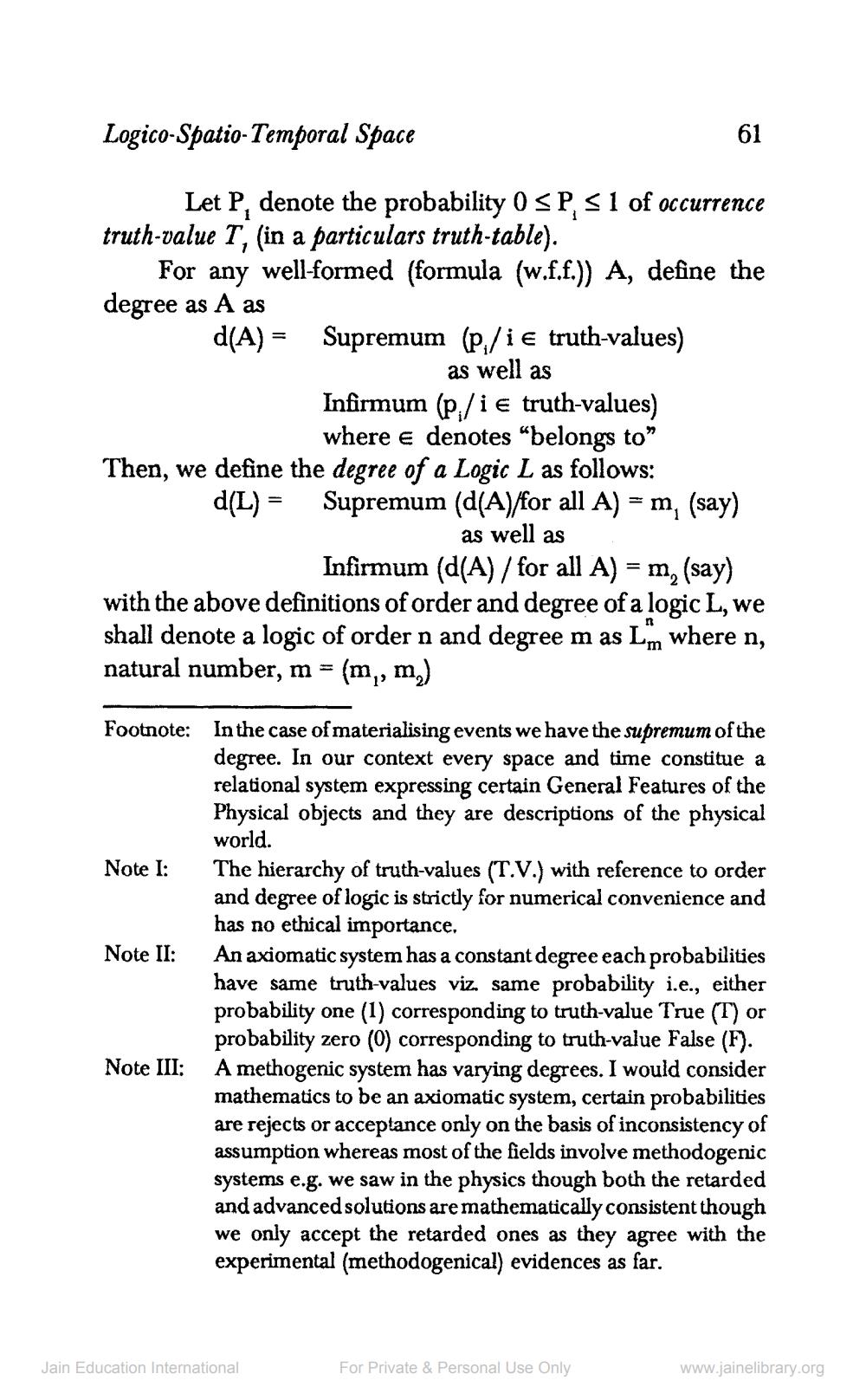________________
Logico-Spatio-Temporal Space
Let P, denote the probability 0 ≤ P, ≤ 1 of occurrence truth-value T, (in a particulars truth-table).
For any well-formed (formula (w.f.f.)) A, define the degree as A as
d(A) =
Then, we define the degree of a Logic L as follows:
d(L) =
Note I:
Supremum (p/iЄ truth-values)
as well as
Note II:
Infirmum (p,/i e truth-values) where e denotes "belongs to"
Infirmum (d(A) / for all A) = m, (say)
with the above definitions of order and degree of a logic L, we shall denote a logic of order n and degree m as Lm where n, natural number, m = (m,, m2)
Note III:
Footnote: In the case of materialising events we have the supremum of the degree. In our context every space and time constitue a relational system expressing certain General Features of the Physical objects and they are descriptions of the physical world.
61
Supremum (d(A)/for all A) = m, (say)
as well as
Jain Education International
The hierarchy of truth-values (T.V.) with reference to order and degree of logic is strictly for numerical convenience and has no ethical importance.
An axiomatic system has a constant degree each probabilities have same truth-values viz. same probability i.e., either probability one (1) corresponding to truth-value True (T) or probability zero (0) corresponding to truth-value False (F). A methogenic system has varying degrees. I would consider mathematics to be an axiomatic system, certain probabilities are rejects or acceptance only on the basis of inconsistency of assumption whereas most of the fields involve methodogenic systems e.g. we saw in the physics though both the retarded and advanced solutions are mathematically consistent though we only accept the retarded ones as they agree with the experimental (methodogenical) evidences as far.
For Private & Personal Use Only
www.jainelibrary.org




